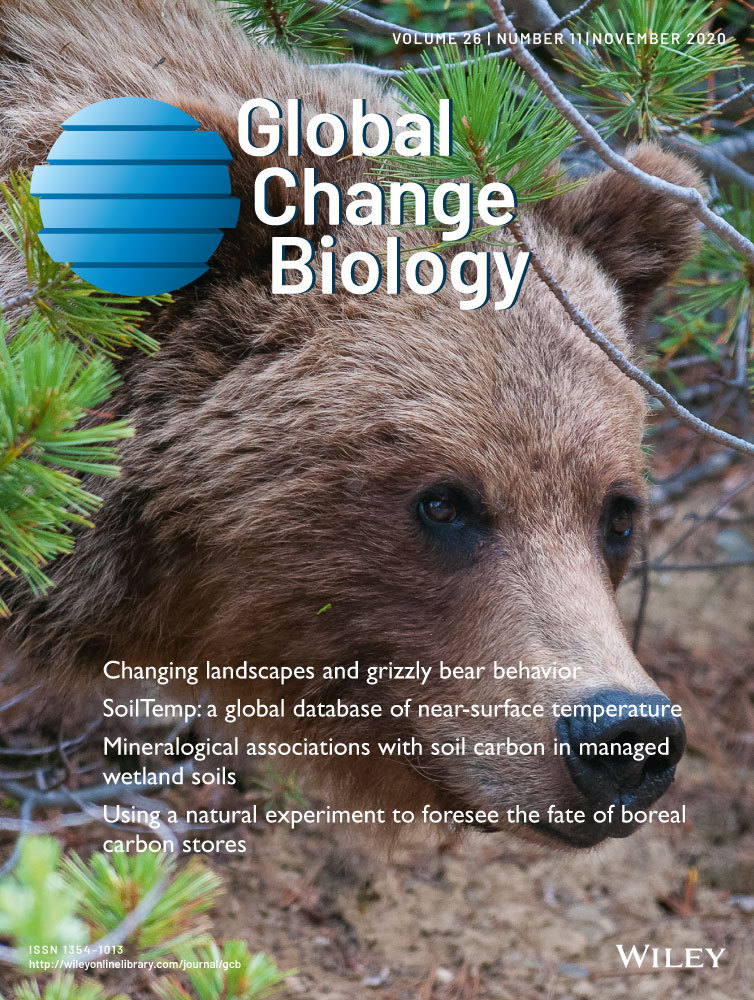View Item
- xmlui.general.dspace_homeCentros Regionales y EEAsCentro Regional Buenos Aires SurEEA BalcarceArtículos científicosxmlui.ArtifactBrowser.ItemViewer.trail
- DSpace Home
- Centros Regionales y EEAs
- Centro Regional Buenos Aires Sur
- EEA Balcarce
- Artículos científicos
- View Item
Environmental and anthropogenic drivers of soil methane fluxes in forests: Global patterns and among‐biomes differences
Abstract
Forest soils are the most important terrestrial sink of atmospheric methane (CH4). Climatic, soil and anthropogenic drivers affect CH4 fluxes, but it is poorly known the relative weight of each driver and whether all drivers have similar effects across forest biomes. We compiled a database of 478 in situ estimations of CH4 fluxes in forest soils from 191 peer‐reviewed studies. All forest biomes (boreal, temperate, tropical and subtropical) but savannahs
[ver mas...]
Forest soils are the most important terrestrial sink of atmospheric methane (CH4). Climatic, soil and anthropogenic drivers affect CH4 fluxes, but it is poorly known the relative weight of each driver and whether all drivers have similar effects across forest biomes. We compiled a database of 478 in situ estimations of CH4 fluxes in forest soils from 191 peer‐reviewed studies. All forest biomes (boreal, temperate, tropical and subtropical) but savannahs act on average as CH4 sinks, which presented positive fluxes in 65% of the sites. Mixed effects models showed that combined climatic and edaphic variables had the best support, but anthropogenic factors did not have a significant effect on CH4 fluxes at global scale. This model explained only 19% of the variance in soil CH4 flux which decreased with declines in precipitation and increases in temperature, and with increases in soil organic carbon, bulk density and soil acidification. The effects of these drivers were inconsistent across biomes, increasing the model explanation of observed variance to 34% when the drivers have a different slope for each biome. Despite this limited explanatory value which could be related to the use of soil variables calculated at coarse scale (~1 km), our study shows that soil CH4 fluxes in forests are determined by different environmental variables in different biomes. The most sensitive system to all studied drivers were the temperate forests, while boreal forests were insensitive to climatic variables, but highly sensitive to edaphic factors. Subtropical forests and savannahs responded similarly to climatic variables, but differed in their response to soil factors. Our results suggest that the increase in temperature predicted in the framework of climate change would promote CH4 emission (or reduce CH4 sink) in subtropical and savannah forests, have no influence in boreal and temperate forests and promote uptake in tropical forests.
[Cerrar]

Author
Fuente
Global Change Biology 26 (11) : 6604– 6615 (November 2020)
Date
2020-09
Editorial
Wiley & Sons
ISSN
1365-2486
Formato
pdf
Tipo de documento
artículo
Palabras Claves
Derechos de acceso
Restringido
 Excepto donde se diga explicitamente, este item se publica bajo la siguiente descripción: Creative Commons Attribution-NonCommercial-ShareAlike 2.5 Unported (CC BY-NC-SA 2.5)
Excepto donde se diga explicitamente, este item se publica bajo la siguiente descripción: Creative Commons Attribution-NonCommercial-ShareAlike 2.5 Unported (CC BY-NC-SA 2.5)
Metadata
Show full item recordRelated items
Showing items related by title, author, creator and subject.
-
La investigación en bosques nativos acompañando al desarrollo sustentable
Peri, Pablo Luis (Colegio de Graduados en Ciencias Forestales de Santiago de Estero, 2020)Los bosques nativos en Argentina, con su gran variedad de ecosistemas que incluyen desde selvas subtropicales hasta bosques subantárticos, brindan a la sociedad diferentes servicios ecosistémicos (alimentos, agua, madera, ... -
Restauración de bosques nativos : la importancia del origen de la semilla
Mondino, Victor Alejandro; Pastorino, Mario Juan (2016)Cuando se habla de degradación en los bosques se hace referencia a la pérdida de productividad y biodiversidad ocasionada por distintos tipos de disturbios como los incendios, tala indiscriminada, el sobrepastoreo y las ... -
Propuesta de protocolos y lineamientos para evaluar planes de manejo de uso sustentable de los bosques
Rusch, Veronica Elena (Ediciones INTA, 2017)Par el empleo del protocolo, se propone pensar la evaluación como si fuera en una tabla donde se incluya cada una de las preguntas a considerar en la primera columna. La evaluación me permitirá responder si el aspecto de ...

